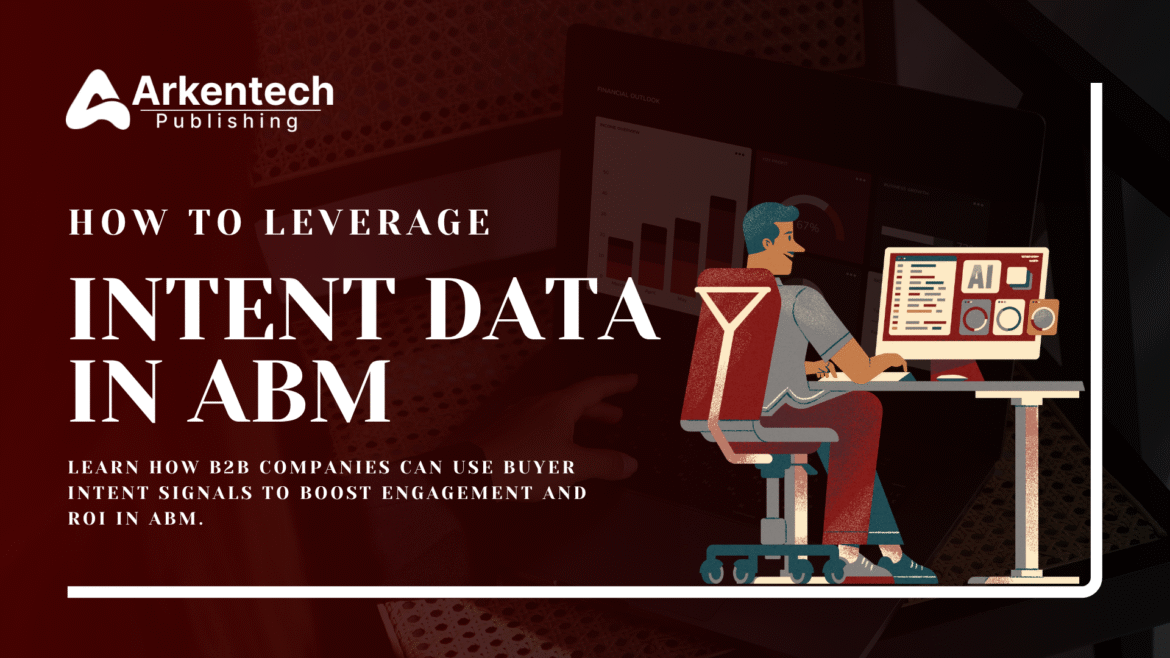Introduction
B2B is in the world, Intent Data in ABM is one of the largest gaming vessels for personalization. They talk to sales long before researching solutions with buyers, giving their digital body language through intention signals providing a different benefit to the oppressive.
This blog says how to use data in account -based marketing to create a more relevant, targeted and highly performed campaign.
What Is Intent Data ?
The Intent Data in ABM behavioral signals indicating the interest of a potential buyer in a product or service. This may include web searches, content downloads, social media involvement, advertising clicks and more. This behavior creates a digital footprint, when tracks and analysis reveal the buyer’s intentions.
There are two types of intent data:
- First-sided Intention Data: Collected directly from their owned platforms such as websites, e-mails and webinars.
- Third-party Intent Data in ABM: Collected from external sources such as Publisher website, advertising networks and B2B data suppliers.
Including this insight into account -based marketing strategies allows laser -centered targeting, better privatization and time search.
Why Intent Data Matters in ABM
Unlike traditional marketing Intent Data in ABM targets high value accounts instead of extensive target groups. Each interaction and touch point is adapted to specific accounts. Why B2B intention data here is a foundation stone in this model:
1. Account Prioritization
Not all goal accounts are ready to buy. Intention data helps with ranking accounts based on their current interest level. This means that you can prioritize seeking to those who show the strongest signal, save time and maximize the return.
2. Personalized Messaging
When you know that an account or product is actively researching, you can tailor your content and messages accordingly. This level of relevance increases the engagement and shortened sales cycles.
3. Sales & Marketing Alignment
The intention acts as a bridge between data marketing and sales teams. With shared insights, both departments can coordinate messages and seek out strategies more efficiently, increasing the chances of conversion..
4. Predictive Analytics
Modern Intent Data in ABM equipment uses AI to estimate which accounts are likely to change based on historical intention patterns. It provides abolition to consistently nurturing stories, before the participants also find that they are in the market.
How to Use Intent Data in Your ABM Campaigns
Implementing Intent Data in ABM isn’t just about collecting information—it’s about using it strategically.
Step 1: Integrate Intent Data in ABM Platforms
Use devices such as bombings, 6Sense, demond base or zoom info to track third -party buyer behavior. Integs these platforms with CRM and the marketing automation tool.
Step 2: Segment Based on Intent Signals
Intent Data in ABM on subjects (eg, cloud safety, CRM equipment) and their research activity..
Step 3: Customize Content & Ads
Serve individual ads, e -mail and destination pages depending on the buyer’s intentions. If a company researches “Enterprise Data Security”, you distribute the affected case study and WhitePapper to care for interest.
Step 4: Trigger Outreach with Sales
When the intention crosses a certain area, in time, the sale for the relevant application automatically notified the team. Sales representatives can refer to accurate subjects as a researcher to open the interaction with the opportunity value
Step 5: Analyze & Optimize
Traces leading to indication of pipeline progression and closed agreements with intention. Over time, it helps you refine the target model and adapt the performance to the campaign
Real-World Example
A B2B -Saas, directed at Enterprise IT team, used bombing data from Bombora to identify companies searching for “Cloud Migration Tools”. He optimized LinkedIn ads and e -mail sequences with the study of the case in question. Result? 2.5x ROI compared to a 38% increase in the engagement rate and their previous Intent Data in ABM campaigns.
In addition, the sales team used Intent Data in ABM to create hyper -relevant calls while seeking out, which improved the reaction rate and more qualified meetings. This strategic adaptation between marketing and sales reduced its average sales cycle to about 22%, which led to average development
Final Thoughts
n Today’s competitive scenario, Intent Data in ABM is no longer optional-this is a requirement. By utilizing real -time behavior signals, you may prefer accounts, customize interactions and interconnect marketing with sales for rapid growth.
Whether you just start with Intent Data in ABM or process a strategy at the corporate level, integration of B2B intention gives you the power to work with insight, not with perception.

